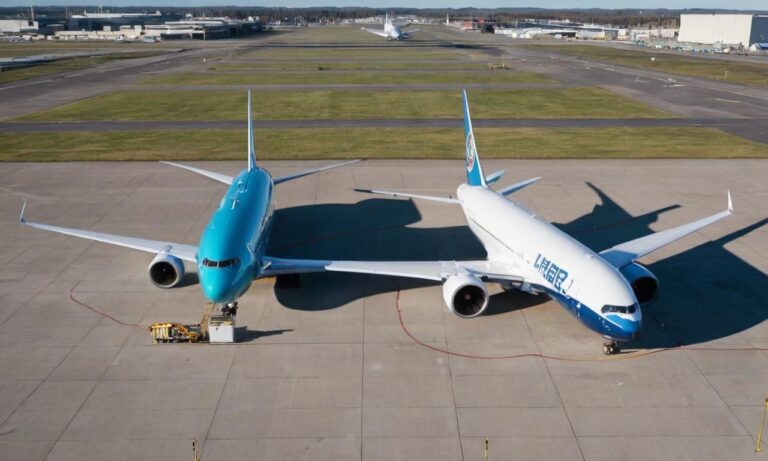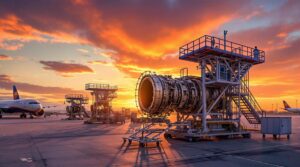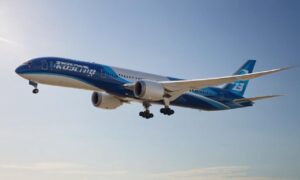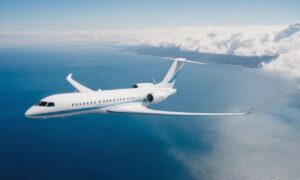In the realm of modern aviation, two giants stand tall—the Boeing 777-300ER and the 787-9. These aircraft represent the pinnacle of engineering and design, each offering a unique set of features and capabilities. Let’s delve into the comparison of the Boeing 777-300ER and the 787-9, exploring their key attributes, performance, and the distinct advantages they bring to the aviation industry.
The Boeing 777-300ER: Power and Capacity
Boasting an extended range and increased passenger capacity, the Boeing 777-300ER is a workhorse in long-haul flights. With a larger wingspan and a lengthened fuselage compared to its predecessor, the 777-300ER ensures that airlines can ferry a considerable number of passengers across vast distances without compromise. The aircraft’s impressive payload capacity makes it a preferred choice for airlines looking to optimize efficiency in high-demand routes.
Equipped with powerful engines, the 777-300ER exemplifies sheer thrust and performance. This results in enhanced takeoff capabilities and the ability to traverse challenging routes with ease. Airlines favor this aircraft for its ability to connect distant destinations, making it a staple in international travel.
The 787-9 Dreamliner: Efficiency and Innovation
On the other hand, the Boeing 787-9 Dreamliner embodies a paradigm shift in aviation. Designed with fuel efficiency and passenger comfort in mind, the Dreamliner utilizes advanced materials like carbon composites to reduce weight and enhance aerodynamics. This translates into lower fuel consumption and reduced environmental impact, aligning with the industry’s growing focus on sustainability.
The 787-9’s innovative features extend beyond its eco-friendly design. The aircraft prioritizes passenger experience, offering larger windows, quieter engines, and improved air quality. Airlines appreciate the Dreamliner for its ability to provide a more comfortable and enjoyable journey, setting a new standard for modern air travel.
Comparative Analysis: Performance Metrics
When comparing these two giants, several performance metrics come into play. The Boeing 777-300ER excels in sheer power and capacity, making it an ideal choice for airlines operating high-demand long-haul routes. Its extended range and payload capacity make it a formidable player in the aviation landscape.
On the other hand, the 787-9 Dreamliner stands out with its focus on efficiency, sustainability, and passenger comfort. While it may not match the 777-300ER in sheer capacity, it presents a compelling option for airlines aiming to balance operational performance with environmental responsibility.
Conclusion: Tailoring to Unique Needs
In conclusion, the choice between the Boeing 777-300ER and the 787-9 Dreamliner boils down to the specific needs and priorities of airlines. The 777-300ER excels in power and capacity, catering to those requiring long-haul capabilities and high passenger loads. Meanwhile, the 787-9 sets a new standard for efficiency and passenger experience, aligning with the industry’s evolving expectations.
Ultimately, the decision rests on whether an airline prioritizes raw performance or seeks a more balanced and environmentally conscious approach. The Boeing 777-300ER and 787-9 Dreamliner, each a marvel of aviation engineering, offer airlines the tools to tailor their fleets to meet the demands of a dynamic and ever-evolving industry.
Operational Costs: A Comparative Overview
Examining the operational costs of the Boeing 777-300ER and the 787-9 Dreamliner provides valuable insights for airlines making fleet decisions. While the 777-300ER may have higher fuel consumption due to its larger size, the 787-9’s fuel efficiency and innovative design contribute to lower operating expenses over time. Airlines looking to optimize costs while maintaining performance must carefully evaluate these economic factors.
Fuel Efficiency and Environmental Impact
The environmental impact of aircraft is a critical consideration in the contemporary aviation landscape. The 787-9, with its emphasis on sustainability, stands out for its reduced carbon footprint and lower emissions. Airlines aiming to align with stringent environmental regulations may find the Dreamliner to be a strategic choice, contributing to a more eco-friendly and socially responsible image.
Frequently Asked Questions
- Q1: Which aircraft is more suitable for long-haul routes?
- Q2: How does the 787-9 prioritize passenger experience?
- Q3: Are there significant differences in maintenance costs between the two aircraft?
A1: The Boeing 777-300ER is specifically designed for long-haul flights, offering extended range and increased passenger capacity, making it a preferred choice for airlines operating high-demand international routes.
A2: The 787-9 Dreamliner focuses on passenger comfort by incorporating larger windows, quieter engines, and improved air quality. These features contribute to a more enjoyable and relaxed flying experience for passengers.
A3: Maintenance costs can vary, with the 787-9 potentially benefiting from newer technologies. However, individual airline operations and maintenance practices play a crucial role in determining overall maintenance expenses.
Global Market Dynamics: Demand and Trends
Understanding the global market dynamics provides context for airlines evaluating the Boeing 777-300ER and 787-9. Factors such as market demand, emerging travel trends, and regional preferences can influence the suitability of these aircraft for different routes and market segments. Staying abreast of these dynamics ensures that airlines make informed decisions that align with industry shifts and evolving passenger expectations.






